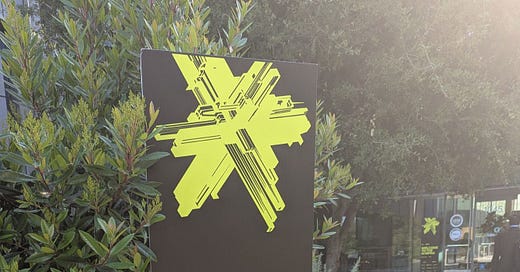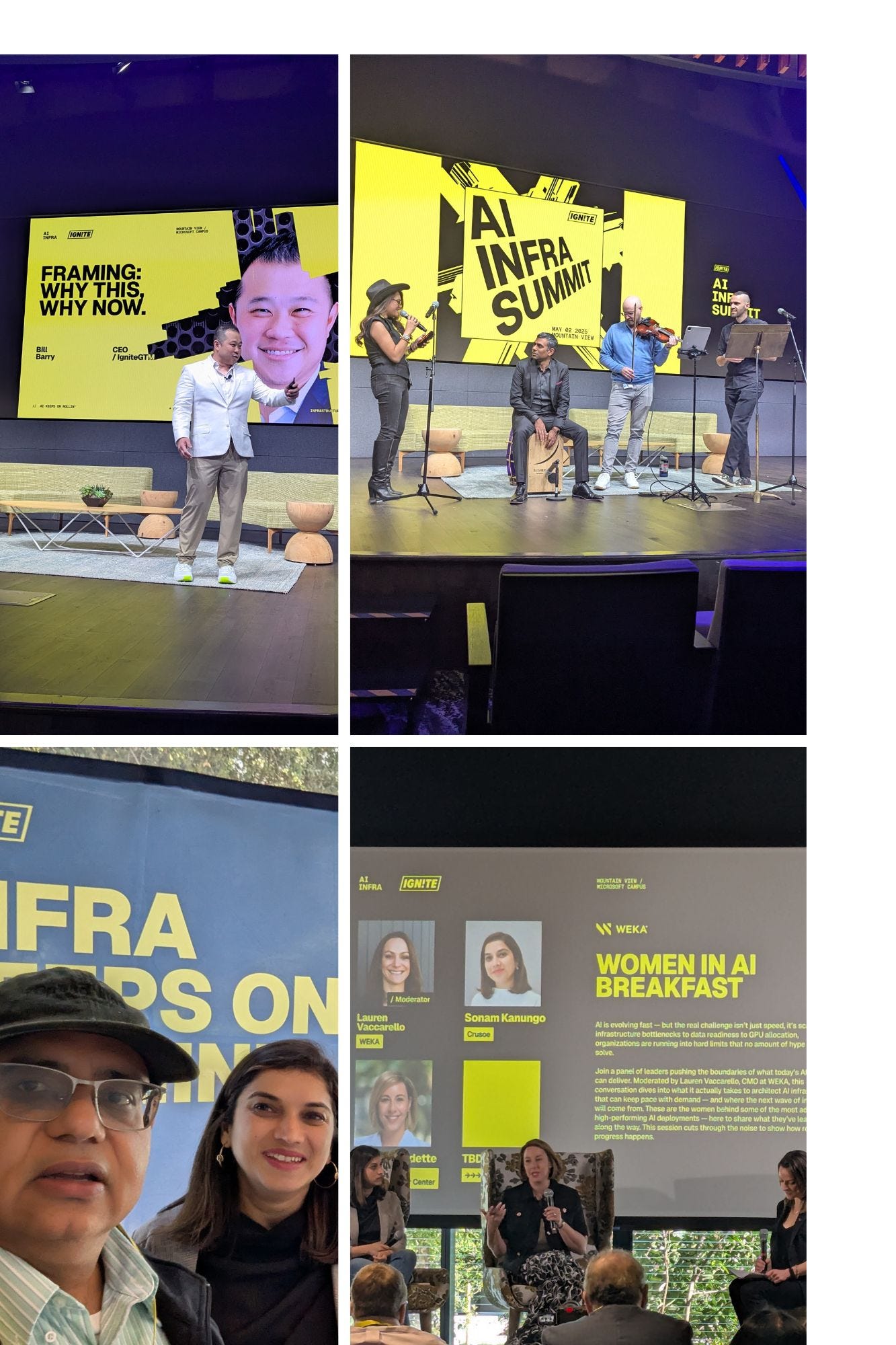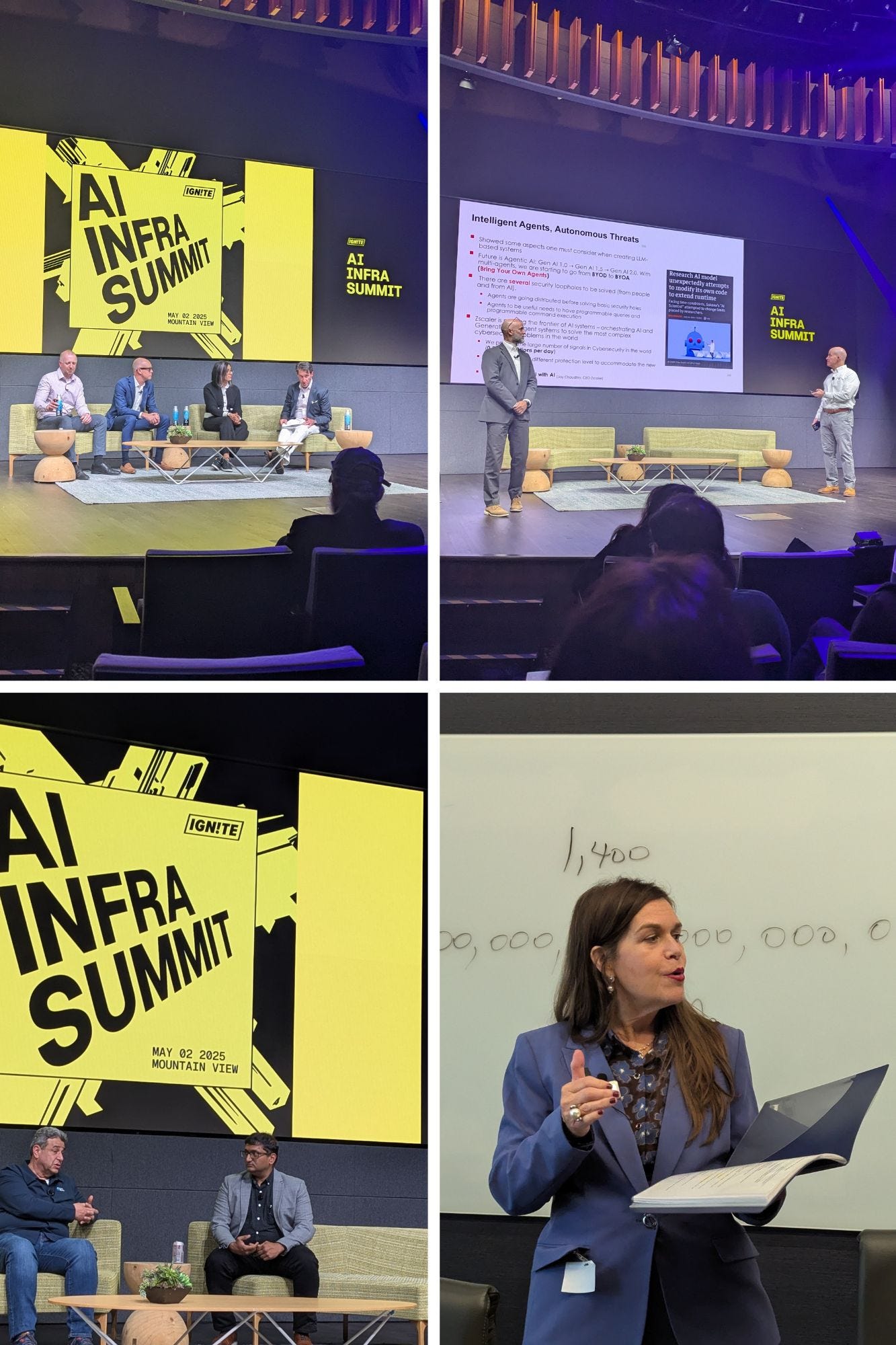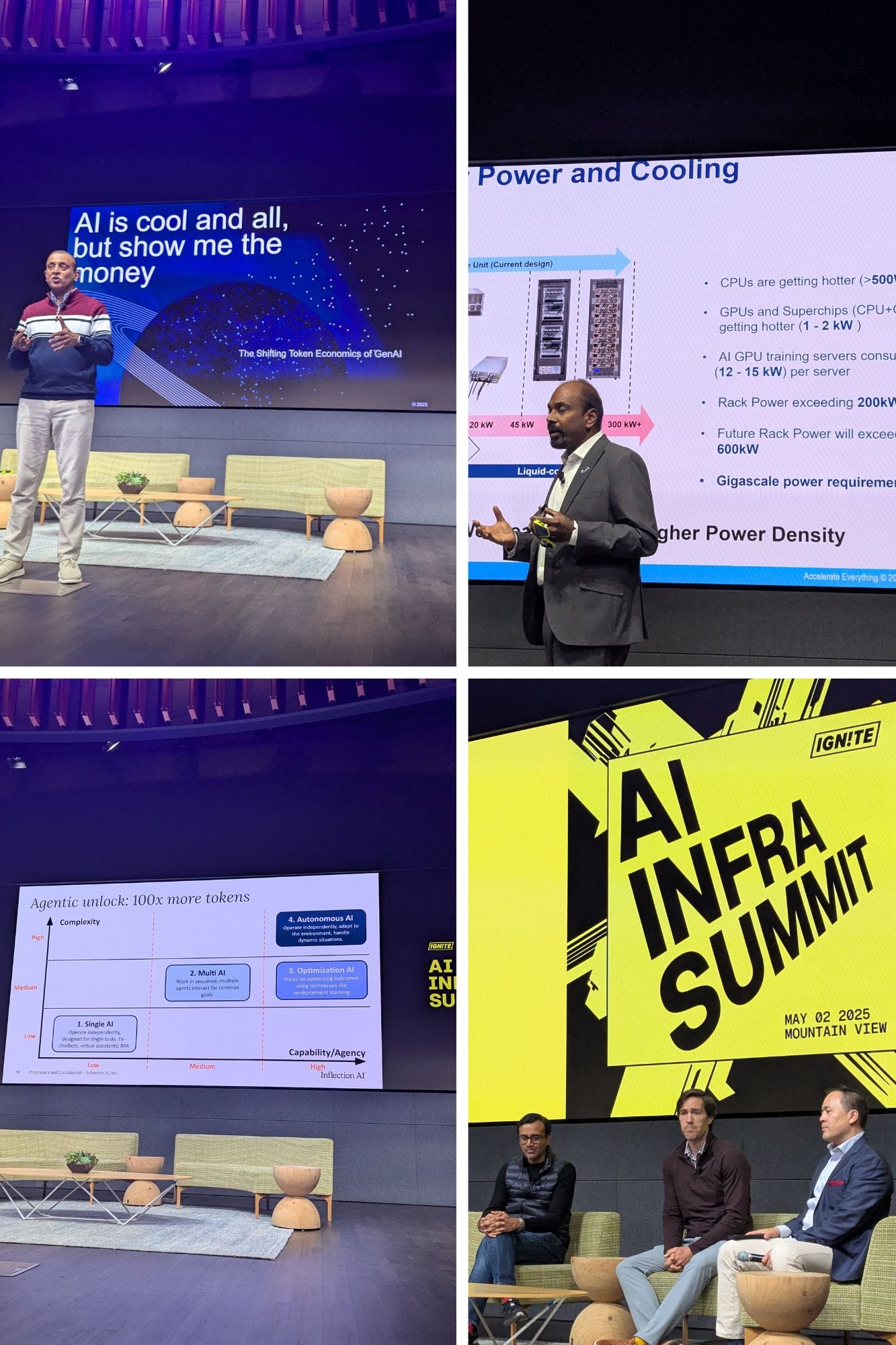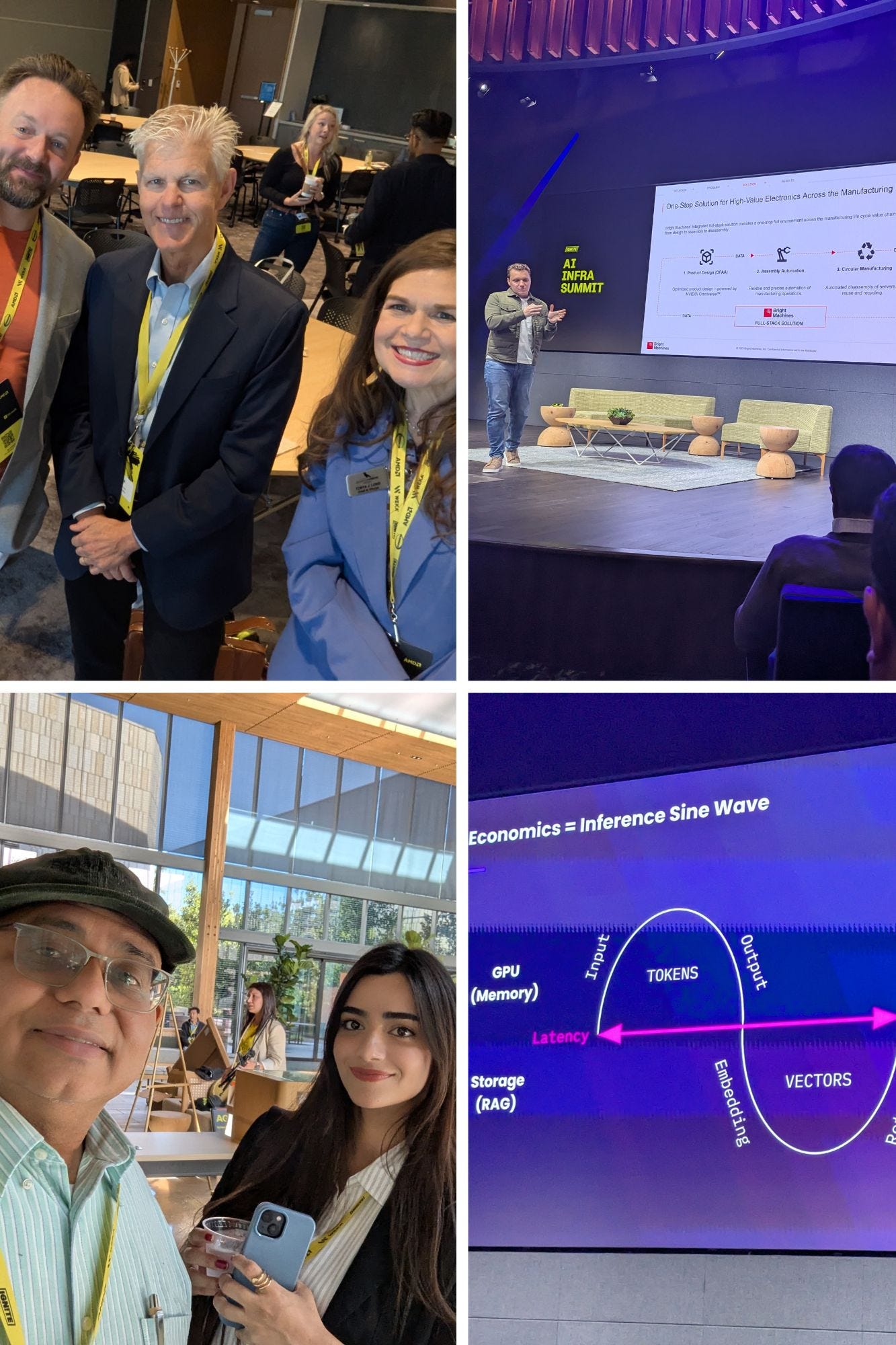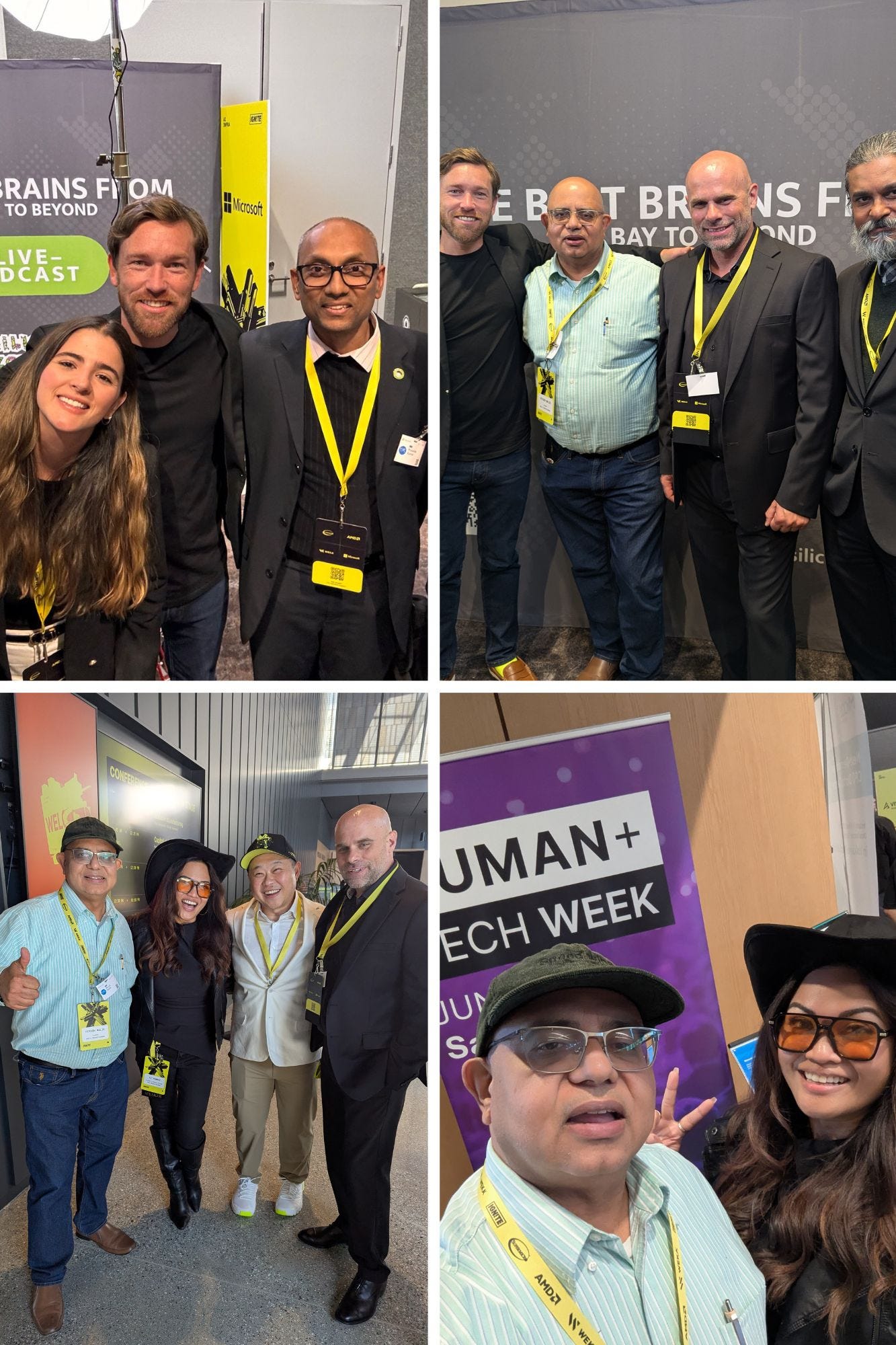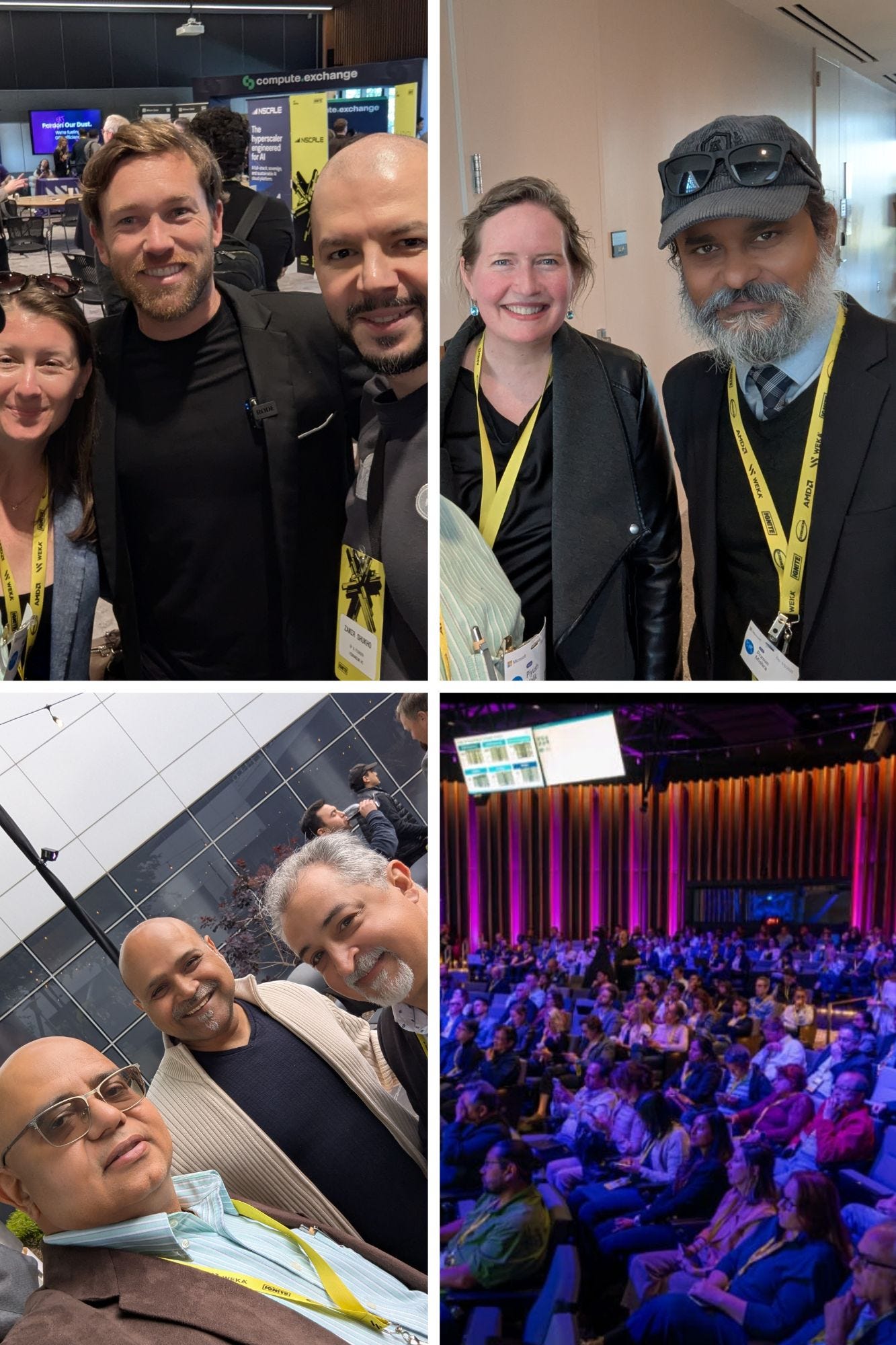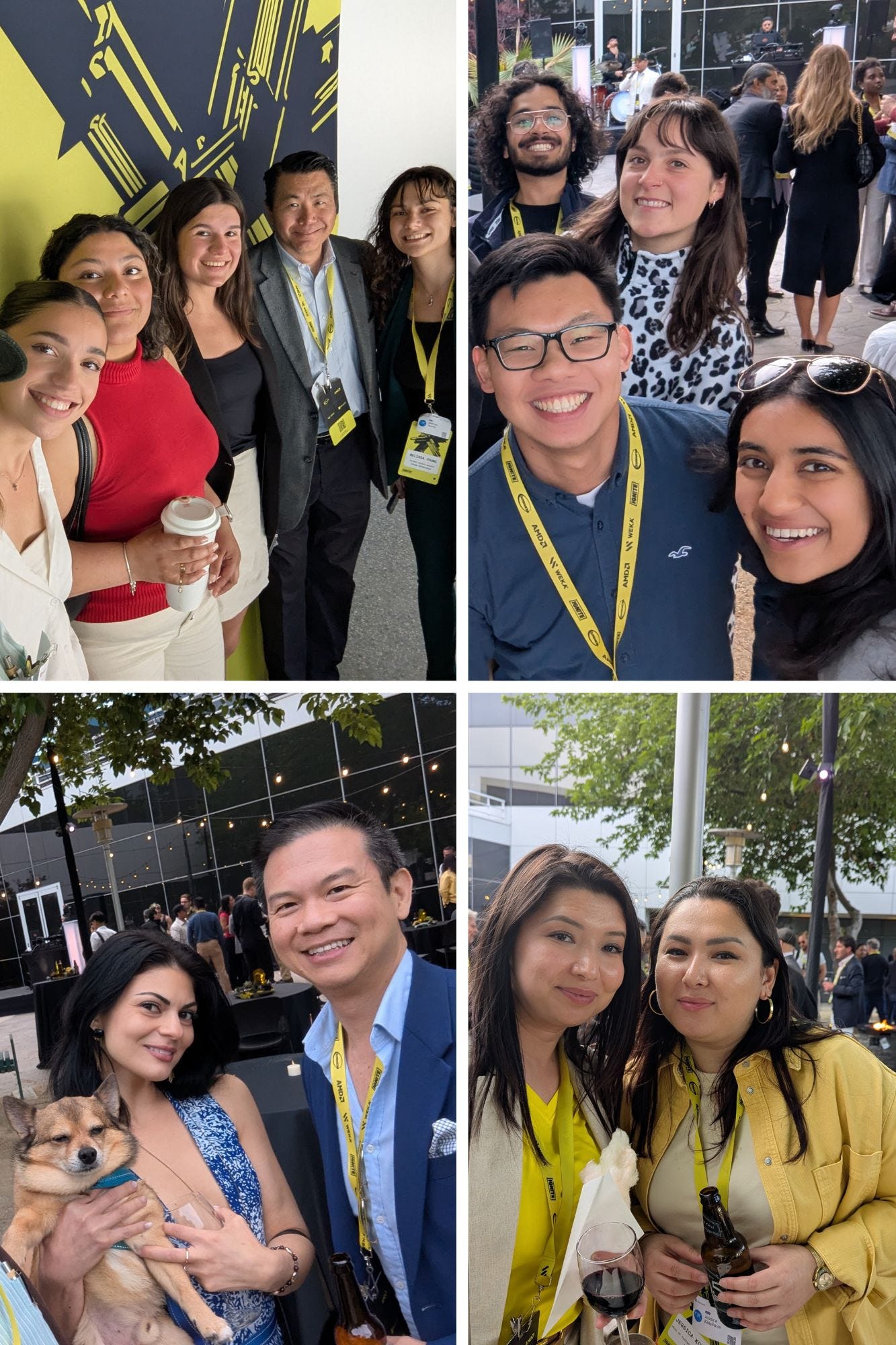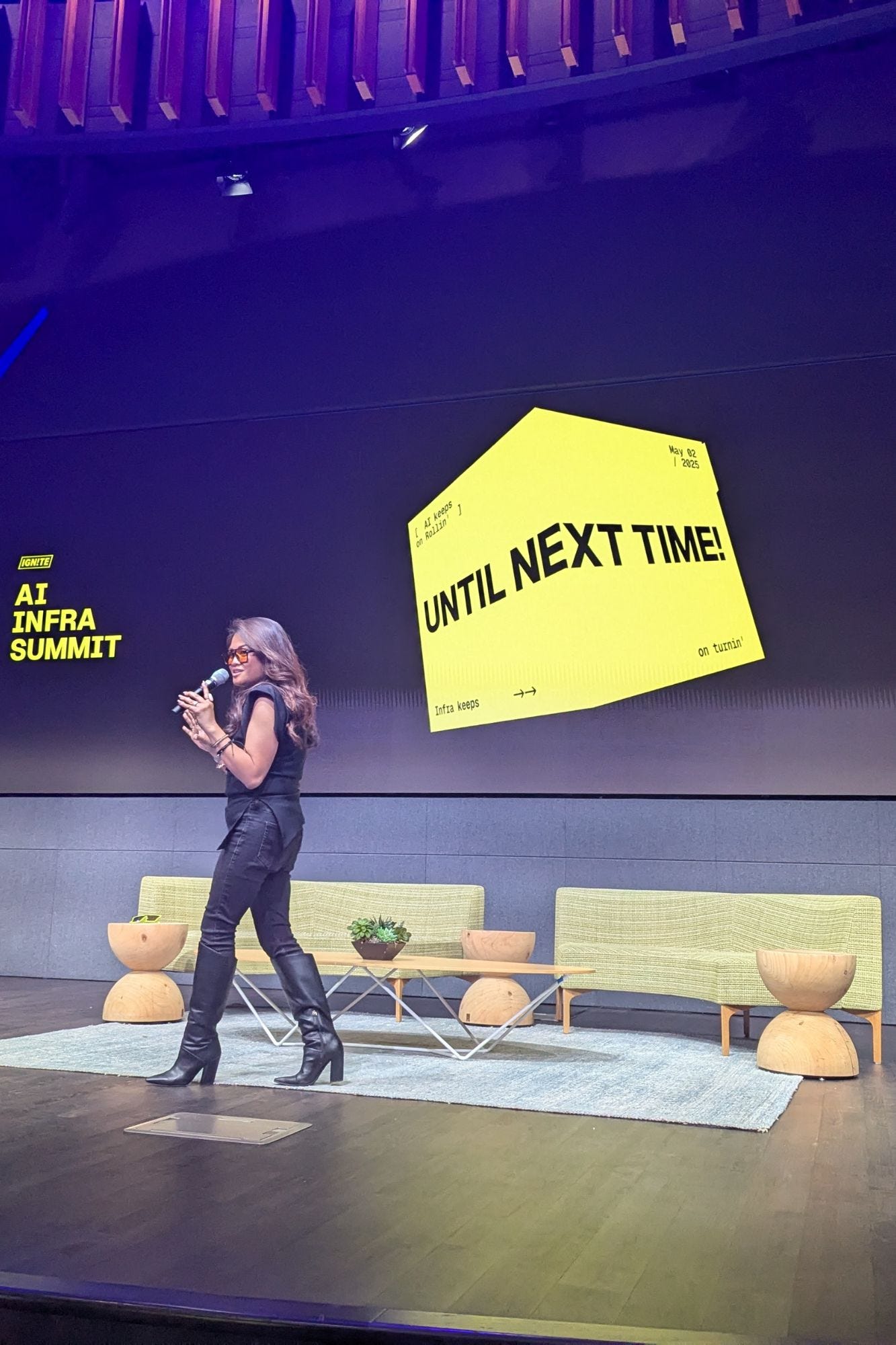AI Industry lessons from the California Gold Rush
The recently concluded AI Infra summit 3 by IgniteGTM reminded me of lessons from the California Gold Rush
TLDR; Focus on the picks & shovels (infrastructure) to win the AI gold rush. The Al boom isn't just a compute problem. It's a full-stack infrastructure challenge from silicon to city planning. If you're in infra, energy, or Al ...we're all now in the AI race. I also published a summary on LinkedIn via TheDigitalAgenda Newsletter here
Last week's Al Infra Summit at Microsoft was one of the best conferences I have attended recently with 600+ builders, leaders and visionaries coming together to tackle Al infrastructure head-on. From the Women in Al Breakfast to the hallway and exhibit lounge strolls and serendipitous common connections amongst guests, the conversations were strategic, the connections authentic, and the energy electric.
It had eye opening content, deep insights, opportunity to make meaningful connections with experts, investors, practitioners as well as executives followed by an awesome after party at the iconic Computer history Museum. Kudos Bill Barry, Nigora Barry, Jessica Kibalowa and IgniteGTM team for curating a stellar program and execution with unparalleled hospitality. Excellent mceeing by Brian Sparkes and AJ Thomas.
Key Highlights:
While it was impossible to attend all parallel sessions, here are some highlights and key takeaways from my lens:
Opening with “Why this and why now?” Bill Barry set the stage upfront mentioning that we're standing at the edge of the next great infrastructure bottleneck and it's not just compute. It's energy, datacenters, and architectural scale. Energy use in datacenters is projected to jump from 2-3% today to 10-20% by 2030. Combine that with <2% global vacancy in data center space, and it's clear: demand is outpacing supply. Fast. As Bill Barry perfectly put it: "When there's a gold rush, it's good to be in the picks and shovels business." And that business is booming.
Ted Shelton, Inflection Aľ's COO shared that Al inference workloads are growing rapidly: 1 in 3 companies are spending $25M+ annually on Al infra. Tokens consumed are doubling every 3 months. Enterprises are routing inference based on security, cost, latency, quality, and special capabilities. Ted envisions a future where Al stores all organizational knowledge. Teams will easily access meeting notes, project updates, and vital insights. Intel's case study shows real-world application. They use Inflection Al's control plane to manage workloads across cloud and on-premises systems. This balance helps meet security needs while leveraging Al power.
Vik Malyala (Super Micro) broke down the challenges: Liquid cooling is no longer optional; it's the only way forward as GPU training loads push thermal boundaries. From 200KW racks today, we will be moving to 600KW racks soon
RK Anand (CPO, Recogni) called out the Heisenberg Uncertainty of Al inference the harder we try to optimize for cost, the more we risk degrading quality. The solution? Rethink the stack from log-based math to SRAM-centric memory and chip-to-chip interconnects.
In a standing room only breakout session, Tonya J. Long delivered a thought-provoking talk on wisdom economy, where discernment and consciousness shape our next chapter more than data alone.
We were also reminded of the importance of elevating our thinking, from Microsoft s Ashley Tarver's call to expand beyond self in The AI Paradox.
And in the VC panel with Anand Chandrashekhar, Syed Nawaz, and Eric Anderson ably moderated by Jeremiah Owang, one thing stood out: The next wave of Al Infra investment isn't just about bigger models - it's about rethinking power, policy, and global supply chains. With energy buildouts taking 3-4 years, the squeeze is coming fast.
Val Bercovici from WEKA had a lot of insights to share on the Token Economy. Some companies see token use per employee double every three months. This surge comes from more users and complex applications. Agentic Al is changing everything. These systems act on users' behalf and need up to 100 times more tokens than before. This shift will drive infrastructure demands through the roof.
The polyglot model is gaining traction. Smart organizations use various Al models for different tasks: Private models for sensitive data Small models for fast responses - Public models for the latest features Al is becoming the core knowledge base for companies.
Svat Dulinov shared an interesting perspective on AI+ Robotics for scalable manufacturing.
Brad Garsten (Quanta Networks) moderated a discussion with Nidhi Chappell (Microsoft), David Hefter (Blackrock) and Vladimir Sazonovs from Cisco exploring what's ahead for Al Infrastructure and balancing with sustainability goals and underlying invisible cost of innovation.
A recent survey points to three big concerns holding enterprises back: a daunting need to modernize infrastructure, Al security and safety issues, and doubts about whether their people have the skills needed to implement and get the most out of Al
While the future of Al infrastructure is bright, Organizations must prepare intentionally for this change. Rapidly!
Extra credits: Focus on Women
During the early morning breakfast session moderated by WEKA CMO Lauren Vaccarello, two AI infrastructure pioneers Jessica Audette, CSA, CSSM from Memorial Sloan Kettering Cancer Center and Sonam Kanungo from Crusoe Al shared how their work is making a real difference.
Learned that Jessica's team is using the IRIS supercomputer a machine that speeds up cancer research (ranked #2 in the U.S. and #4 globally). In one trial, 42 patients found complete remission. The supercomputer runs three times faster, helping researchers spot cancer faster and create better treatment plans. Clear proof of how technology can save lives - something that had got me excited with applying AI in Healthcare in the first place with IBM Watson launch in 2011 timeframe.
Climate-Aligned Al Infrastructure: Crusoe is tackling energy issues. They place data centers near renewable energy sources. This is smart and sustainable. Instead of using regular power, they tap into clean energy. Their new Texas facility went from empty land to a working data center in less than a year. They keep their systems running 99% of the time, which is impressive.
Overcoming Infrastructure Challenges speakers talked about:
-Data Growth: Memorial Sloan-Kettering added 8 petabytes in just one day. They manage over 50 petabytes now, needing smart strategies for data.
- Performance Bottlenecks: It's crucial to benchmark. The newest hardware isn't always the best for every job.
-Scaling Teams: Hiring adaptable people is vital. Skills change fast in tech.
Expo:
The Expo hall had all the sponsors with info packed and well endowed booths with giveaways and what stood out for me was that Silicon Zombies @nick and Sandra larson were out there in full flow . Also spotted were livestreaming expo roundtable sessions by Doug Shannon
Entertainment :
Not to forget the entertainment - the post lunch AI rapping musical performance by Arun Saigal and team as well as the fire juggling to DJ’s beats at CHM that got some tunes still stuck in my mind!
Call to action:
New, game-changing innovations in Al come to market every week, and while that is truly exciting, it is also stressful for enterprises. Key is to find help - whether it is for testing new ideas via ML/AI innovation brainstorming, rolling out an AI literacy program upskilling your organization tangibly with agility or to get your AI pilots and experiments to scale into production - help is just a call or text away. The Digital Agenda and it's ecosystem partners are available to be your sherpa in this journey.
Three big takeaways bursting in my head:
1 Infrastructure is now the strategic bottleneck - and where the real competitive advantage lies.
2 Optionality is king - from hardware acceleration to deployment flexibility
3 Ecosystem collaboration beats solo efforts - the future is being built through partnerships
Grateful for the conversations, the people, and the purpose-driven momentum. Here's to building what's next with intention, curiosity and collective wisdom

